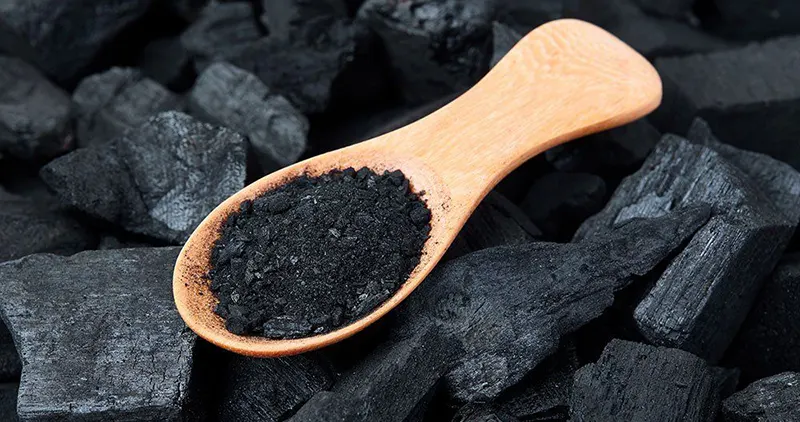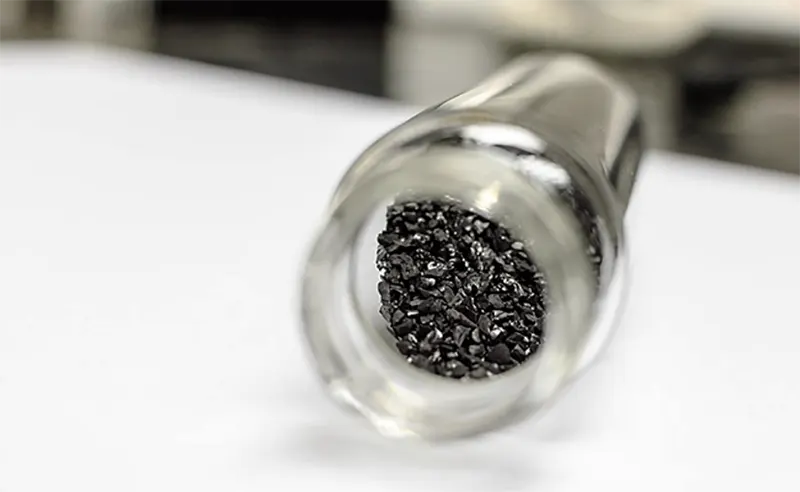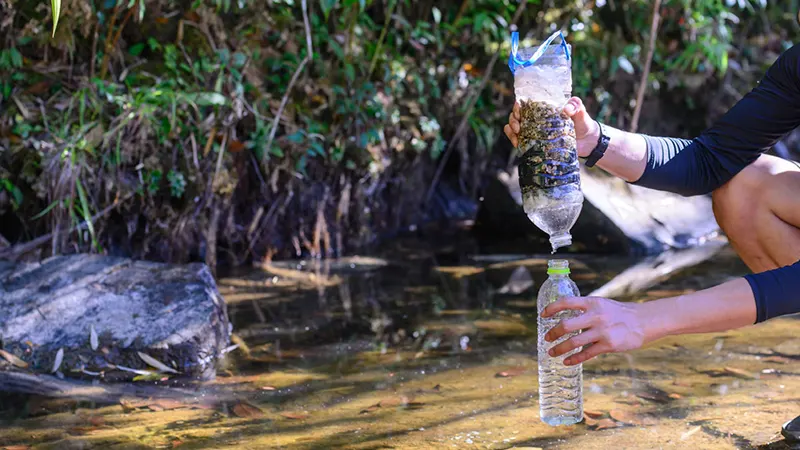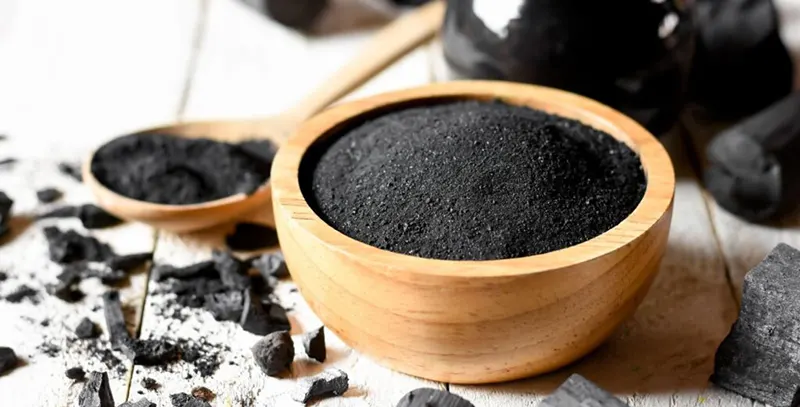Activated charcoal has a highly absorbent nature. It’s one good reason why some people use it for emergency treatment for specific types of poisoning. It prevents toxins from being absorbed by the stomach, making it one of the best cleansers available.
Activated charcoal does not have an expiration date. However, it can degrade over time, particularly when left exposed to the environment. Some activated charcoal products are marketed with a shelf life of 1 to 3 years.
If you have activated charcoal at home or you’re planning on storing it for emergency use, this article can guide you in getting a better understanding of its shelf life and how to properly store it. But first…
How Is Activated Charcoal Made?

A fine black powder, activated charcoal is created by burning bone char, coconut shells, peat, coal, olive pits, or sawdust. Using extremely high temperatures during processing “activates” the charcoal.
Its interior structure is altered by the high temperatures, resulting in smaller holes and more surface area. This is why the charcoal produced is more porous than regular charcoal.
Take note that even though it can be created from various materials, it’s crucial to use activated charcoal derived from coconut shells or other organic materials when using it for natural healing.
How Does Activated Charcoal Work?
The tiny pores in activated carbon capture toxins and chemicals. As mentioned earlier, the heating method used to form its small pores results in the absence of similar pores in regular charcoal.
Then, positively charged toxins and gases are drawn to the porous surface of activated charcoal due to its negative electric charge. Remember that opposite attracts.
Adsorption, the process of an element binding to a surface, is what enables the removal of toxins. However, it doesn’t take the pollutants in.
Now, don’t get confused between adsorption and absorption in the body. The latter is the process through which substances, such as nutrients, chemicals, and poisons, are absorbed and processed into the bloodstream.
How to Properly Store Activated Charcoal
If stored in a tightly sealed container, activated charcoal can last decades without losing its potency. However, moisture can seep into the tiny pores when you put it inside a plastic or paper bag. Also, contaminants such as bacteria, mold spores, and viruses can contribute to its degradation.
Here are the concrete ways how to store activated charcoal products correctly:
Maintain original packaging
If you bought activated charcoal with foil packaging, you could store it as is. However, if it comes in a plastic bag, find an airtight container and transfer it. Plastic has tiny holes on its surface that allow moisture and other contaminants in the environment to enter.
Plastic containers can also emit chemicals as they deteriorate and activated charcoal can absorb the chemical fumes it gives off. If you do not want to transfer the powdered charcoal or the activated carbon into a container, make sure to use it immediately.
Place inside a glass jar

Another convenient way to store activated charcoal securely is to place it inside a mason jar. However, remember to keep the glass jar in a safe space away from the reach of children.
Put it inside a mylar bag
Another way to lengthen the shelf life of your activated carbon is to store it inside a mylar bag. Among the three options, mylar bags are the most effective way to keep activated charcoal from air and moisture.
Ways to Reactivate Activated Charcoal Filters
There are a couple of ways to reuse activated charcoal. However, you have to limit reactivation to two to three times to ensure that it’ll still work as expected.
Chemical reactivation
Chemical activation is the preferred method for large-scale activation since chemical reaction produces the desired outcome with less heat and in less time. During chemical activation, raw carbon sources are combined with an acid, base, or salt. Then, the mixture is heated.
Inorganic salts may precipitate in the activated charcoal. When this happens, thermal reactivation might not help. Yet, an acid solution can help you reactivate it. By using hydrochloric acid, you can allow the following substances to precipitate:
- Calcium salts
- Lime
- Carbonates
Thermal reactivation
Suppose activated carbon is contaminated with low-boiling impurities. In that case, it can be partially or entirely reactivated in a furnace or oven at 200°–400° F or treated with low-pressure steam before being dried.
Granular activated carbon can typically be factory reprocessed (reactivated) to match the original product’s adsorptive ability.
Importance of Activated Charcoal During Survival and Emergency
Having your emergency and survival kit ready for SHTF moments would be best. You never know when a catastrophe strikes, so you must always be prepared; activated charcoal is one of the most essential stuff you need to have in your kit.
Here is why:
It can help alleviate skin irritations.
You can use activated carbons as a salve for wounds and other skin issues. Many say it is effective in treating insect stings and bites like spider bites. To do this, make a paste by mixing the power into a small amount of water. Then apply to the affected area.
It can eliminate strong odors.
During disasters, water can be scarce. The situation might not allow you to change clothes or take a bath regularly. Your socks and shoes may grow and emit a foul odor as days pass. You can put some inside your stinky feet or clothes.
But, it will stain, so do not put it like baby powder. You can also put it in open containers and situate it in every corner of your bugout tent or house. It eliminates humidity and harmful molds.
It can act as one of the best water filters.

You can use activated carbon as a water filtration system. The capacity of activated charcoal to filter water is equally essential in a survival emergency.
Sucking charcoal through a straw while covering the opening with a cloth is the simplest method. The charcoal will absorb most impurities, making the water safe to drink.
Using a tall plastic bottle or bucket filled with fine sand, peat moss, and charcoal and pouring water through it into another container covered in a t-shirt or other material to filter out particles makes for a good water filter.
You can use it as a trailer marker.
Since charcoal stains a lot, you can use this as a path mark when hiking or camping. Get some pieces of rocks. Wet the rocks or make a charcoal paste. After which, you can smudge the surface of the stone or other clean surfaces.
That way, it will be more convenient for you and your companions to know your whereabouts. Charcoal messages have been demonstrated to persist flawlessly for tens of thousands of years in a dry place.
It helps in food poisoning cases.
There are cases where charcoal filters or activated carbons can help when you intake a poisonous berry or drink contaminated water.
It can absorb toxins and other impurities. It can also attract heavy metals. Though it can induce a stomach ache or diarrhea, it still helps you eliminate these harmful substances from your body.
Always remember to drink a lot of water to avoid constipation.
Other instances of intoxication where activated carbon can assist:
- Cyanide poisoning
- Opioids
- Alcohol hangover
It can serve as a DIY gas mask
Because it can take in pollutants from the air, activated charcoal works well as a gas mask filter. Although inferior to a professional gas mask, this would be useful in an SHTF scenario.
Other uses of activated charcoal:
- Teeth whitening
- Beauty routine
- Deodorant
The Bottom Line

It seems that activated charcoal is widely used today. Activated charcoal has a lot of uses and benefits in terms of medical and survival.
However, do not forget to use the product moderately. Though there are no recorded adverse effects today, it is still important to use everything conservatively. Anything excessive might put you to danger.
